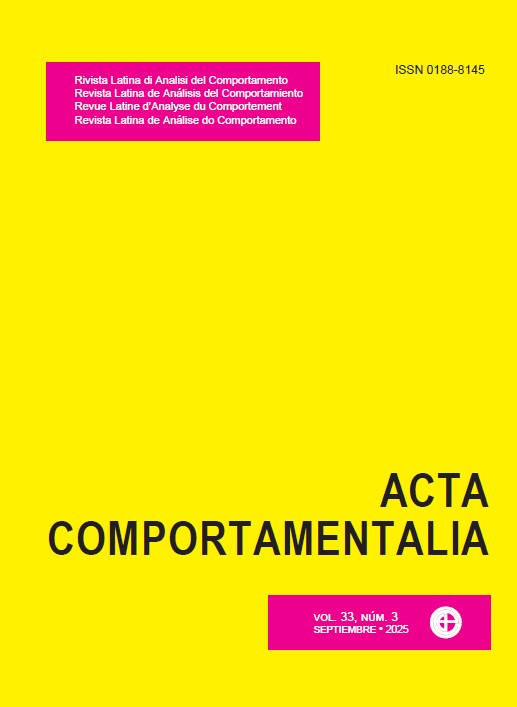Behavioral-Based Safety Intervention to Promote the use of Helmet by Cyclists
DOI:
https://doi.org/10.32870/ac.v33i3.88685Keywords:
behavioral safety, visual prompts, personal protective equipment, professional delivery cyclistAbstract
Workplace accidents have historically been a significant social issue in modern society. Thousands of workers are exposed to labor accidents worldwide every day. Under the label of “behavior-based safety”, studies have examined ways of behavior-analytic interventions to address this problem. Visual and textual prompting is among the frequent ways of intervention in formal workplaces. So is the presentation of performance feedback concerning the use of personal protective equipment (PPE). However, the emergence of the so-called “uberized” workforce may pose a challenge to the effectiveness of such interventions. Previous studies have reported intersubject variability resulting from interventions to promote helmet use among professionals engaged in delivery services using bicycles as a means of locomotion and who are registered on online labor-mediation platforms. The precariousness of many aspects of the work relationship may make the intervention focused on helmet use become something that seems to be less important. If that is true, interventions to promote helmet use in professionals inserted at the uberized work could be less likely to succeed. This study compared the effectiveness of a behavioral intervention to promote helmet use in two situations: an uberized work context (Context 1) and an alternative context of using bicycle as an alternative mode of locomotion (Context 2). Three professionals, formally registered at online platforms of delivery services, and three college students participated in the study. The intervention comprised two phases: (1) free access to personal protective equipment (PPE) and (2) exposition to visual prompts through digital banners with contingent performance feedback of using helmet. A multiplebaseline experimental design across participants was used. The data show that the intervention was ineffective in promoting helmet use among the three professional cyclists. In Context 2, all the participants started to use the helmet when given the intervention. Procedures defined as Phase 1 of the intervention were sufficient to promote safe behavior in two participants in Context 2. For the third participant, who already owned a helmet, Phase 2 effectively promoted safe behavior. Given the difference in intervention effectiveness between the two contexts, issues related to Context 1 are discussed. Uberized labor relations, with its inherent risks and uncertainties, seems to be a peculiar work environment that offers singular barriers to behavior-based safety interventions such as those concerning helmet use.
Downloads
Downloads
Published
How to Cite
Issue
Section
License

<a rel="license" href="http://creativecommons.org/licenses/by-nc-sa/4.0/"><img alt="Licencia de Creative Commons" style="border-width:0" src="https://i.creativecommons.org/l/by-nc-sa/4.0/88x31.png" /></a><br />Este obra está bajo una <a rel="license" href="http://creativecommons.org/licenses/by-nc-sa/4.0/">licencia de Creative Commons Reconocimiento-NoComercial-CompartirIgual 4.0 Internacional</a>.






